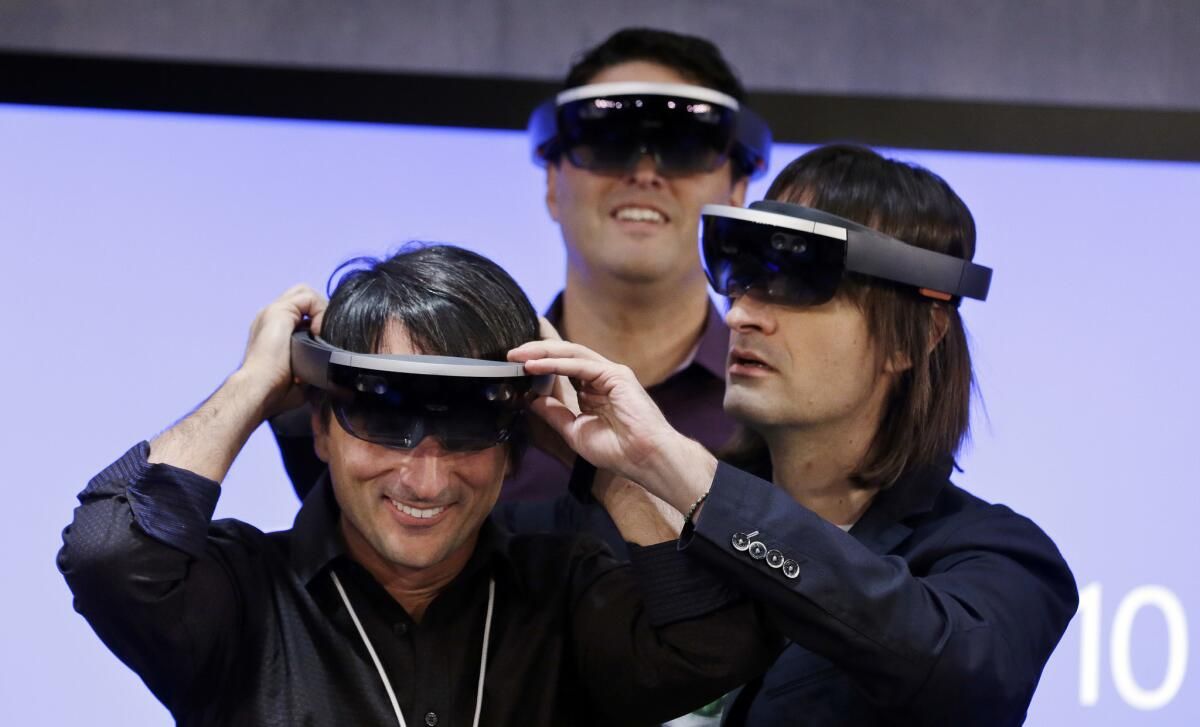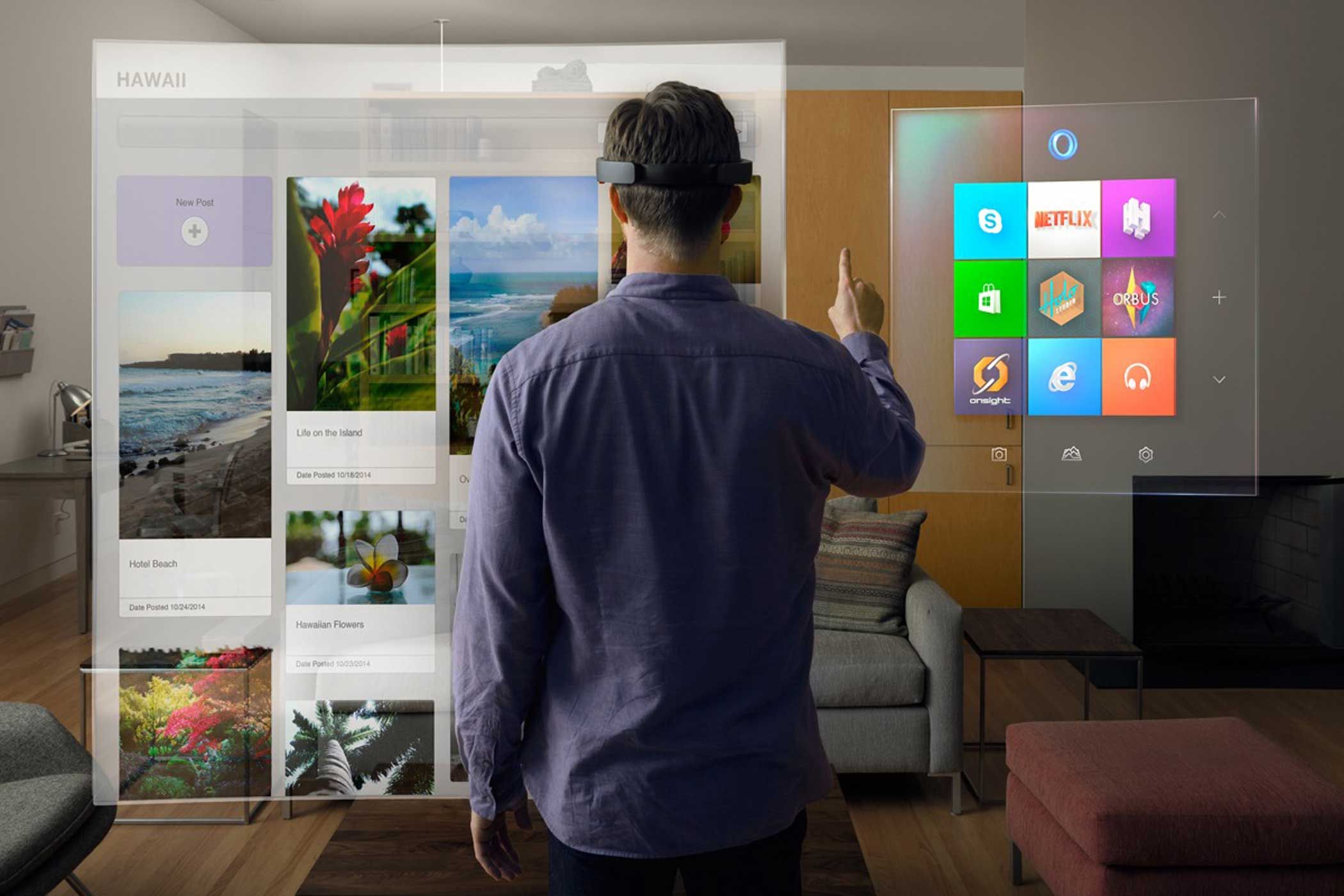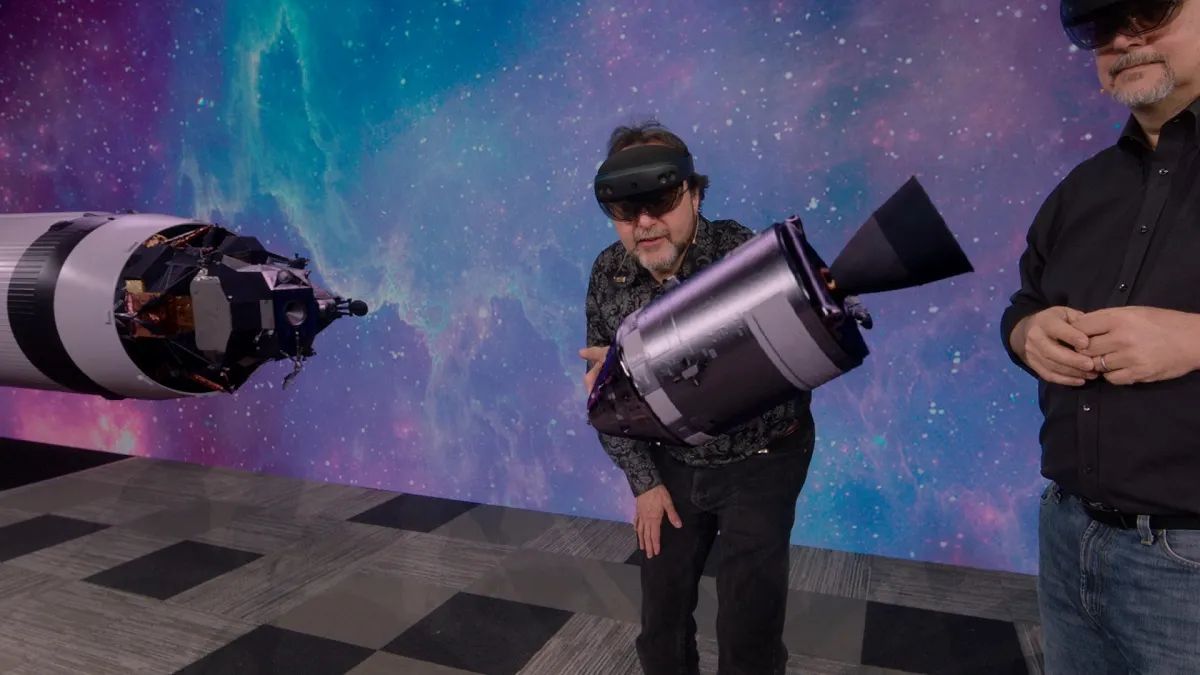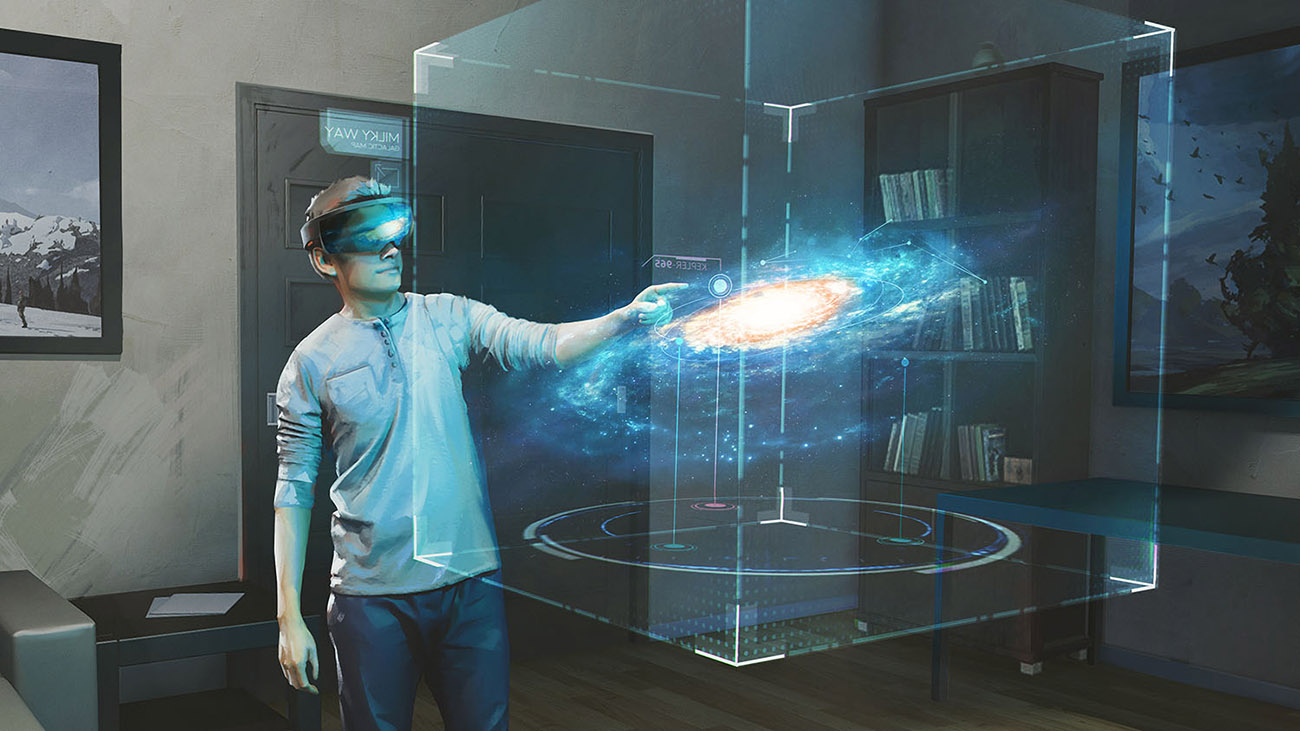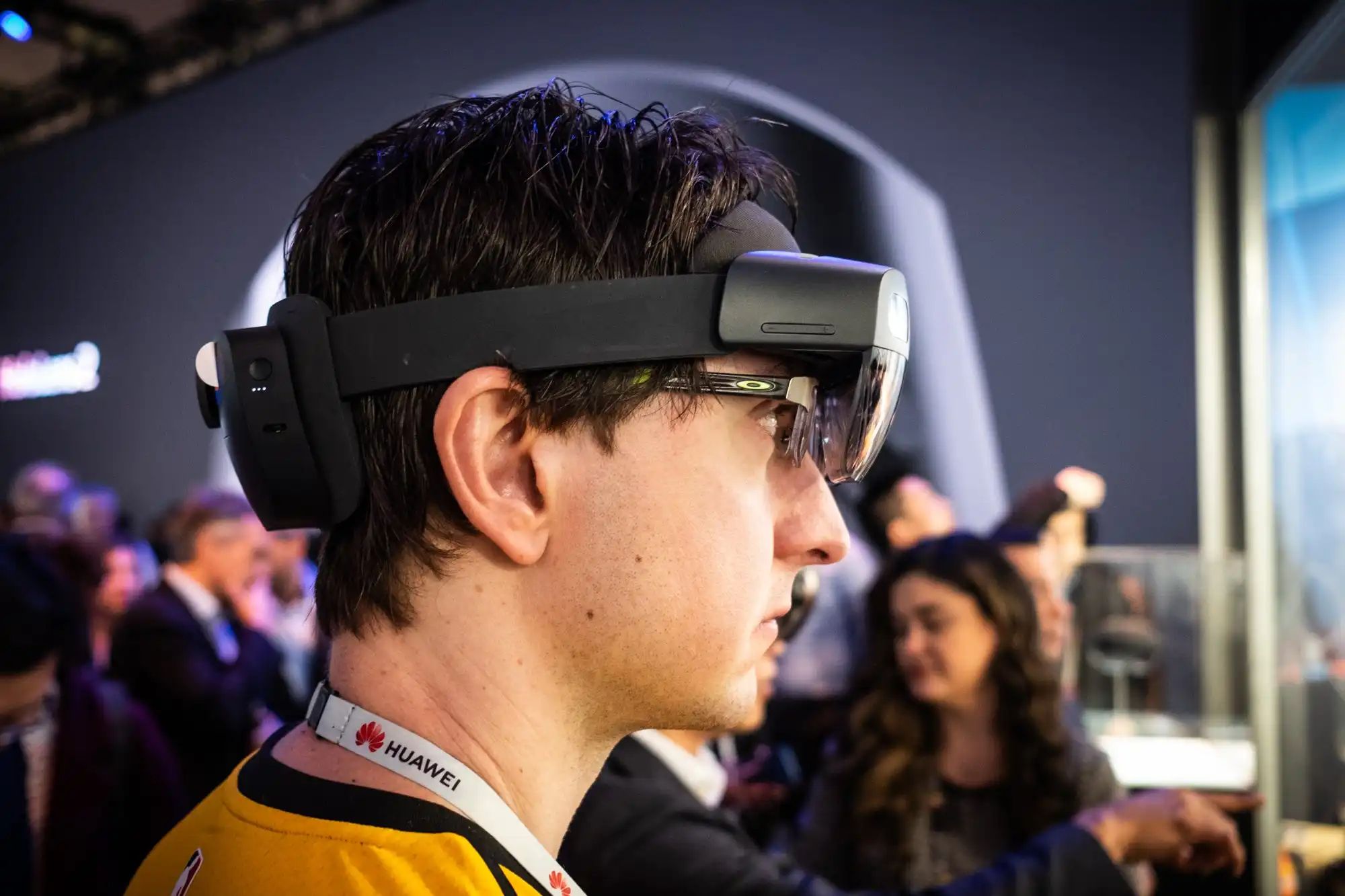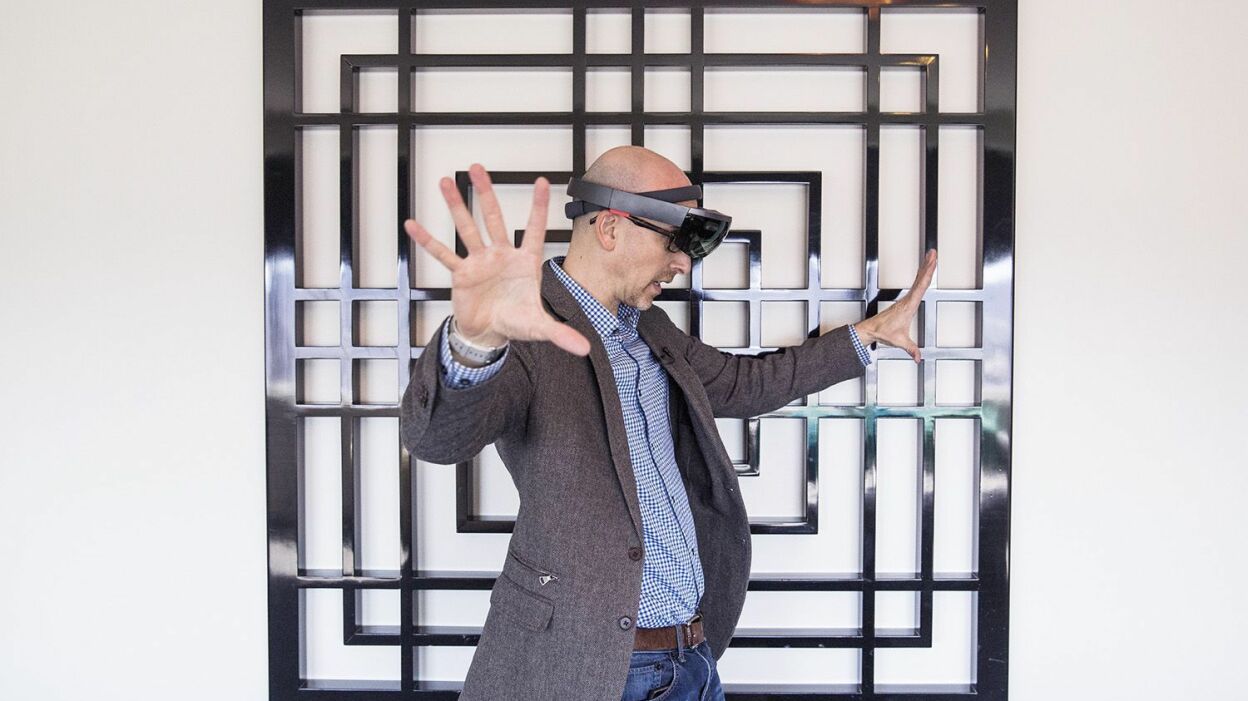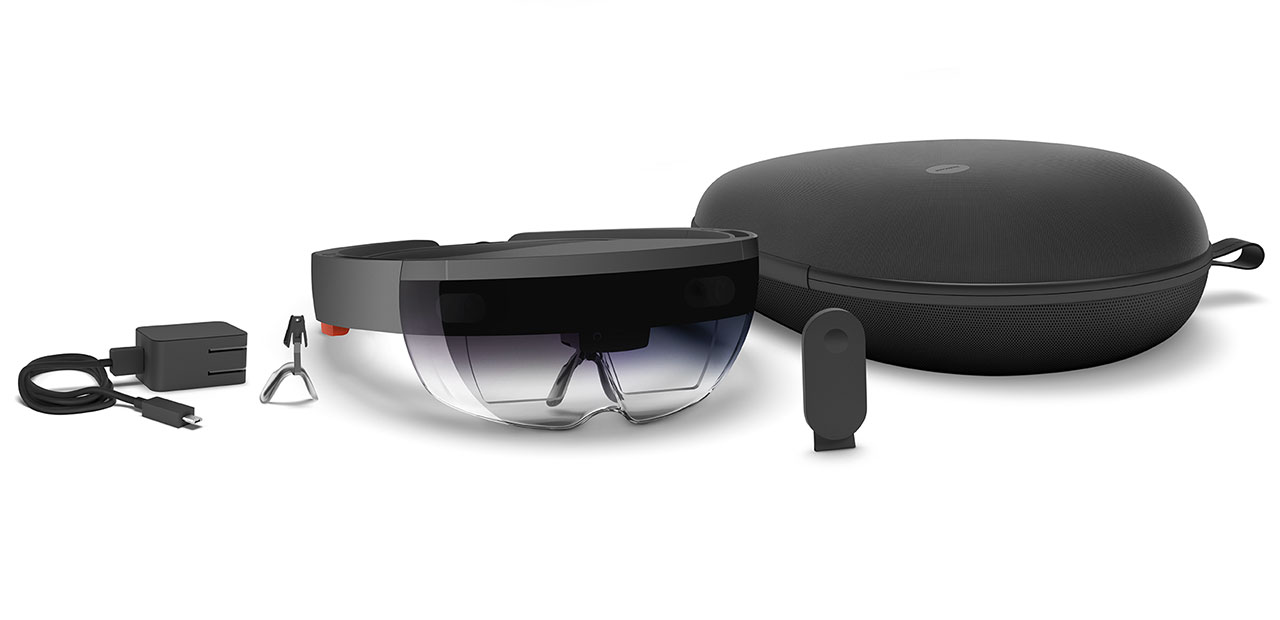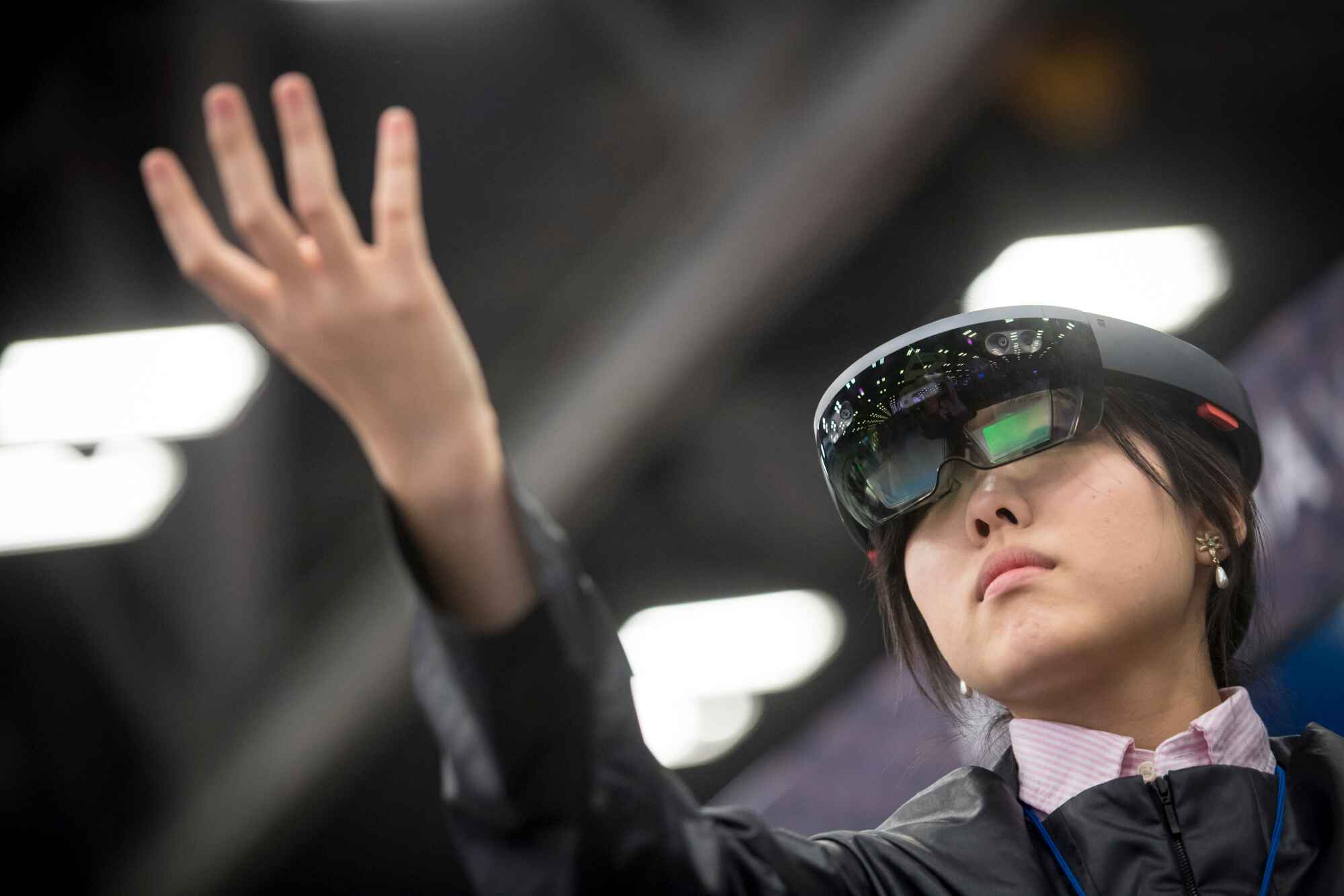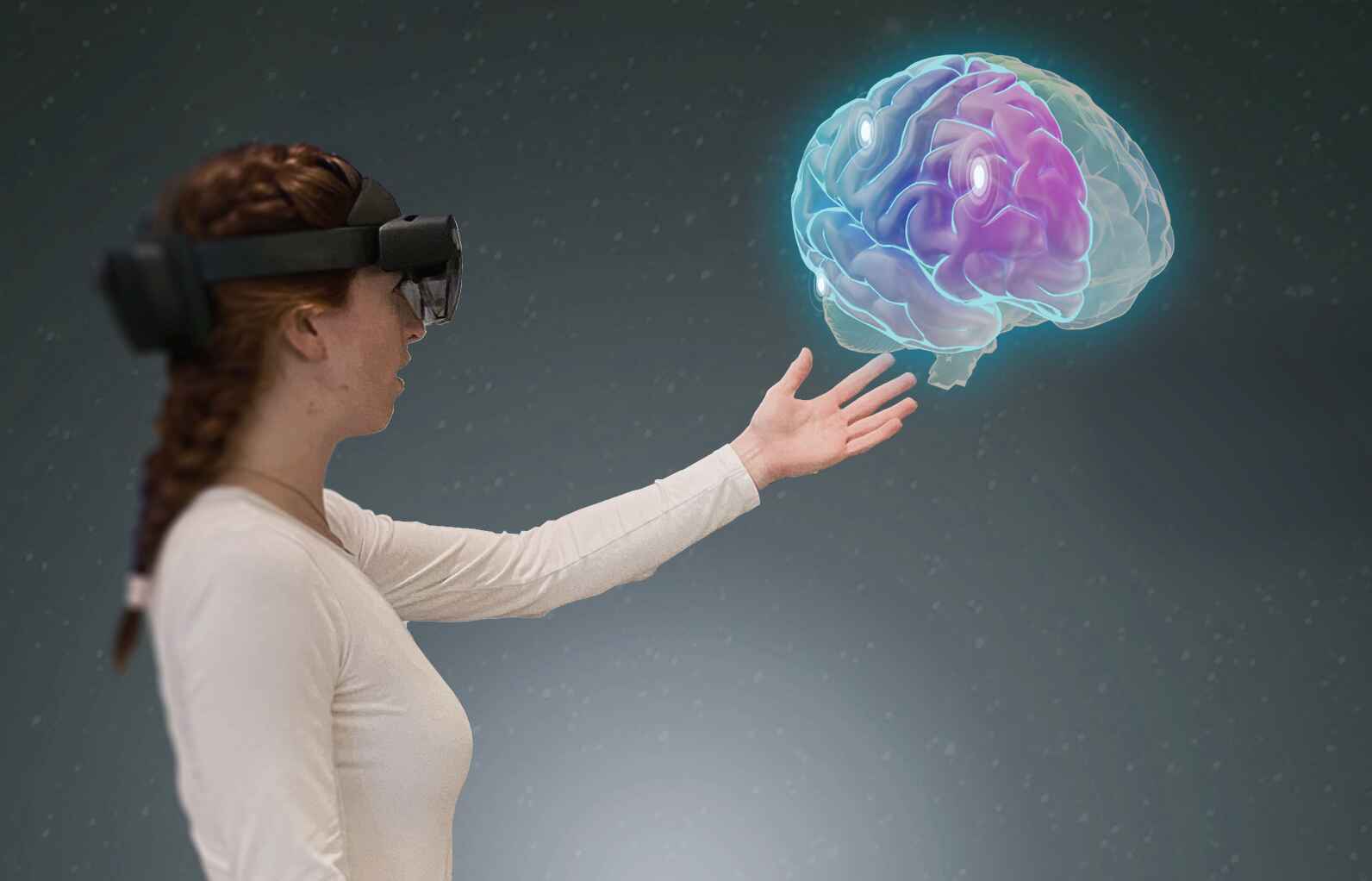What is HoloLens?
HoloLens is a revolutionary mixed reality headset developed by Microsoft. It combines virtual reality (VR) and augmented reality (AR) technologies to create a unique and immersive computing experience. With HoloLens, users can interact with digital content in their physical environment, blending the digital and real worlds seamlessly.
The HoloLens device consists of a headset with a transparent display, sensors, and built-in speakers. It runs on the Windows Mixed Reality platform, enabling users to see and interact with holograms and virtual objects, while still being aware of their physical surroundings.
What sets HoloLens apart from traditional VR headsets is its ability to overlay virtual elements onto the real world. It uses advanced spatial mapping technology to understand and track the environment, allowing users to place and manipulate holograms as if they were tangible objects. This unique feature opens up a wide range of possibilities for gaming, education, design, healthcare, and other industries.
The HoloLens experience is powered by a combination of powerful processors, cameras, and sensors. These components work together to accurately track the user’s movements and adjust the holographic content accordingly, providing a smooth and realistic experience.
One of the key benefits of HoloLens is its untethered design, meaning it doesn’t require any external devices or wires to function. This freedom of movement enables users to explore and interact with virtual content without being confined to a specific area. It also incorporates a high-resolution display and a wide field of view, ensuring a stunning visual experience for the users.
Overall, HoloLens is a groundbreaking device that pushes the boundaries of technology and transforms the way we interact with digital content. By seamlessly integrating virtual elements into the real world, it opens up new possibilities for entertainment, productivity, and collaboration.
The Initial Announcement of HoloLens
The initial announcement of HoloLens took place on January 21, 2015, during Microsoft’s “Windows 10: The Next Chapter” event. It was an eagerly anticipated unveiling, as Microsoft had been keeping the project under tight wraps. The announcement generated significant excitement and anticipation among tech enthusiasts and industry professionals alike.
During the event, Microsoft CEO Satya Nadella introduced HoloLens as a key component of the company’s vision for the future of computing. He emphasized the device’s ability to blend the digital and physical worlds and create a new dimension of possibilities.
The demonstration showcased HoloLens’ advanced capabilities by presenting various applications, including gaming, communication, and productivity. The audience was captivated as they witnessed holographic objects interact seamlessly with the real world. This groundbreaking technology promised to revolutionize industries such as architecture, design, healthcare, and education.
The announcement also revealed Microsoft’s commitment to open collaboration. The company announced that they would be partnering with developers to create a diverse ecosystem of apps and experiences for HoloLens. This signaled Microsoft’s recognition of the importance of community involvement in shaping the future of the technology.
The initial announcement of HoloLens created a buzz that extended beyond the event itself. Tech publications and media outlets covered the news extensively, analyzing the potential impact of this new technology on various industries. The anticipation surrounding HoloLens was further fueled by the release of a teaser video showcasing the device in action, building excitement among consumers, developers, and businesses alike.
The announcement marked a significant milestone in the development of HoloLens and served as a catalyst for further innovation in the mixed reality space. It laid the foundation for subsequent iterations of HoloLens, showcasing Microsoft’s dedication to pushing the boundaries of technology and reimagining the way we interact with digital content.
HoloLens Development Edition
Following the initial announcement, Microsoft launched the HoloLens Development Edition in March 2016. This was a significant milestone, as it allowed developers to get their hands on the cutting-edge mixed reality technology and start creating applications and experiences for the platform.
The HoloLens Development Edition was specifically targeted at developers, providing them with the tools and resources needed to explore the full potential of the device. It came with a comprehensive software development kit (SDK) that included APIs, documentation, and sample code, empowering developers to build immersive holographic experiences.
The Development Edition expanded the possibilities for developers to create innovative applications across a wide range of industries. From gaming and entertainment to education and enterprise solutions, the HoloLens platform offered virtually unlimited potential for creative expression and problem-solving.
With the launch of the Development Edition, a community of passionate HoloLens developers began to grow rapidly. This community became a valuable resource for sharing knowledge, exchanging ideas, and collaborating on projects. Microsoft actively engaged with developers, providing support, hosting events, and offering opportunities to showcase their creations.
The HoloLens Development Edition marked a pivotal moment in the timeline of HoloLens, as it paved the way for advancements and improvements based on developer feedback and real-world applications. This iterative approach allowed Microsoft to refine the technology, enhance user experiences, and align the device’s capabilities with the evolving needs of developers and consumers.
During the Development Edition phase, developers had the opportunity to experiment with the HoloLens platform and provide valuable insights and feedback. This feedback informed Microsoft’s decision-making process and contributed to the continuous improvement and refinement of the device.
The HoloLens Development Edition not only provided early access to the technology but also fostered a vibrant developer community that played a crucial role in shaping the future of mixed reality. Their contributions helped expand the HoloLens ecosystem, leading to the creation of diverse and compelling applications that showcased the true power of mixed reality computing.
HoloLens Commercial Suite
Building upon the success of the HoloLens Development Edition, Microsoft introduced the HoloLens Commercial Suite in August 2016. This edition was specifically designed for businesses and enterprises, offering additional features and support tailored to their unique needs.
The HoloLens Commercial Suite aimed to empower businesses and organizations to leverage mixed reality technology for a variety of applications, including training, visualization, collaboration, and remote assistance. It provided enhanced security, device management capabilities, and enterprise-grade support to ensure a seamless integration of HoloLens into existing workflows.
One of the key features of the Commercial Suite was the inclusion of a set of enterprise-grade security and management tools. This allowed IT administrators to have control over the devices, ensuring that sensitive data and proprietary information are protected. It also enabled centralized device management, making it easier to deploy, configure, and update multiple HoloLens devices across an organization.
Furthermore, the Commercial Suite provided additional licensing rights, allowing businesses to take advantage of the HoloLens platform for commercial purposes beyond development. This opened up new opportunities for enterprises to explore innovative use cases and create custom solutions to meet their specific needs.
In addition to the security and management features, the Commercial Suite provided enterprise-grade support. This included faster response times, dedicated technical support, and access to exclusive resources to assist businesses in successfully integrating HoloLens into their operations.
The HoloLens Commercial Suite showcased Microsoft’s commitment to empowering businesses and organizations with immersive and interactive computing experiences. By catering to the specific needs of the enterprise sector, it enabled the adoption of mixed reality technology at a larger scale, accelerating digital transformation across industries.
Through the Commercial Suite, Microsoft demonstrated their understanding of the challenges and requirements faced by businesses when integrating new technologies. They addressed these challenges by providing comprehensive features, support, and licensing options, ensuring that HoloLens could be seamlessly integrated into existing enterprise workflows.
HoloLens 2 Announcement
The highly anticipated announcement of HoloLens 2 occurred on February 24, 2019, at the Mobile World Congress in Barcelona. This event marked a significant leap forward in the evolution of mixed reality technology, as Microsoft unveiled the successor to its groundbreaking HoloLens device.
HoloLens 2 represented a major advancement over its predecessor, introducing several key improvements and new features. Satya Nadella, the CEO of Microsoft, took the stage to unveil the device and present its capabilities to a captivated audience of tech enthusiasts and industry professionals.
The announcement showcased HoloLens 2 as a more comfortable, immersive, and versatile device compared to its predecessor. It featured a redesigned form factor with lightweight carbon fiber material and a balanced center of gravity, providing improved comfort during extended use. The device also introduced a new, flip-up visor design, allowing users to seamlessly transition between the digital and physical worlds without having to remove the headset.
Another significant enhancement of HoloLens 2 was its improved field of view. The device offered a larger viewing area, allowing users to see more holograms within their environment. This expanded field of view provided a more natural and seamless mixed reality experience, enhancing immersion and usability.
The announcement also highlighted HoloLens 2’s breakthrough hand and eye-tracking capabilities. The device incorporated advanced sensors and cameras to accurately track hand movements and gestures, enabling more intuitive interactions with holographic content. Additionally, the eye-tracking technology allowed for improved cursor control and enhanced focus-based interactions, making the HoloLens 2 experience even more responsive and immersive.
Microsoft also emphasized the enterprise-focused features of HoloLens 2. The device introduced improved integration with Azure cloud services, enabling businesses to leverage the power of cloud computing for data processing and AI capabilities. It also offered enhanced security and device management features, catering to the needs of large-scale deployments in industries such as manufacturing, healthcare, and architecture.
The HoloLens 2 announcement generated widespread excitement and anticipation among developers, businesses, and consumers alike. The device promised to unlock new possibilities across a wide range of industries, revolutionizing the way individuals interact with digital content and transforming workflows and processes.
Overall, the announcement of HoloLens 2 marked a significant milestone in the evolution of mixed reality technology. Its improved comfort, field of view, hand and eye-tracking capabilities, and enterprise features positioned it as a powerful tool for innovation and digital transformation. The unveiling of HoloLens 2 set the stage for its subsequent release, which would bring the next generation of immersive mixed reality experiences to the hands of developers and businesses around the world.
HoloLens 2 Features and Improvements
HoloLens 2 introduced a range of new features and improvements that built upon the success of its predecessor. These enhancements aimed to provide users with a more comfortable, immersive, and intuitive mixed reality experience, unlocking new possibilities across industries and use cases.
One of the standout improvements of HoloLens 2 was its ergonomic design. The device featured a more balanced and lightweight form factor, utilizing carbon fiber material for enhanced comfort during extended wear. The addition of a flip-up visor allowed users to seamlessly transition between the virtual and physical worlds without the need to remove the headset, enhancing convenience and facilitating multitasking.
Another notable enhancement was the expanded field of view. HoloLens 2 offered a larger viewing area, allowing users to see more holograms within their environment. This wider perspective provided a more immersive and natural mixed reality experience, enabling users to interact with virtual content in a more intuitive and engaging way.
HoloLens 2 also introduced significant improvements in hand and eye-tracking technology. The device incorporated advanced sensors and cameras to accurately track hand movements and gestures, allowing for more precise and natural interactions with holographic content. This enhanced hand-tracking capability further bridged the gap between the physical and digital worlds, making it easier for users to manipulate and interact with virtual objects.
In addition to hand-tracking, HoloLens 2 incorporated eye-tracking technology, enabling users to control the device using their gaze. This feature allowed for improved cursor control, as well as more seamless and efficient navigation through holographic interfaces. Eye-tracking also facilitated focus-based interactions, enabling users to interact with holograms based on where they were looking, further enhancing immersion and usability.
The device also introduced improved integration with Microsoft Azure, the company’s cloud computing platform. This integration enabled businesses to leverage the power of the cloud for data processing, AI capabilities, and remote collaboration. By connecting HoloLens 2 to Azure, organizations could enhance their mixed reality experiences with advanced analytics, machine learning, and other cloud-based services.
HoloLens 2 also addressed feedback from enterprise customers by incorporating enhanced security and device management features. Enterprise organizations could now deploy and manage multiple HoloLens 2 devices at scale, ensuring data security and facilitating large-scale deployments across various industries. These improvements made HoloLens 2 a more viable and robust solution for businesses looking to integrate mixed reality into their workflows.
Overall, the features and improvements of HoloLens 2 led to a more comfortable, immersive, and versatile mixed reality experience. From ergonomics and field of view to hand and eye-tracking capabilities, HoloLens 2 set a new standard for intuitive and natural interaction with holographic content. Furthermore, the integration with Azure and enhanced enterprise features positioned HoloLens 2 as a powerful tool for businesses and industries seeking to leverage mixed reality solutions for improved productivity, collaboration, and innovation.
Conclusion
Since its initial announcement, HoloLens has revolutionized the world of mixed reality, pushing the boundaries of technology and transforming how we interact with digital content. From its early development edition to the commercial suite and the groundbreaking HoloLens 2, each iteration has brought new features and improvements that have propelled mixed reality technology forward.
HoloLens has proven to be a game-changer across various industries. From gaming and entertainment to education, healthcare, and enterprise solutions, the device has unlocked new possibilities for creativity, productivity, and collaboration. The seamless blending of the digital and physical worlds that HoloLens offers has opened up endless opportunities for innovation and problem-solving.
With its lightweight design, expanded field of view, and advanced hand and eye-tracking capabilities, HoloLens 2 has set a new standard for comfort, immersion, and intuitive interaction. The device’s integration with Azure and enhanced security and management features have made it even more appealing to businesses and organizations seeking to leverage mixed reality technology for various applications.
The evolution of HoloLens has been characterized by continuous improvement based on user feedback and real-world applications. Microsoft’s dedication to collaboration with developers and engagement with their growing community has truly shaped the future of mixed reality. The HoloLens platform has flourished as a result, with a vibrant ecosystem of applications and experiences continuing to emerge.
As technology advances and HoloLens continues to evolve, we can expect even more exciting developments in the realm of mixed reality. The potential applications of this technology are vast, spanning industries and transforming the way we live, work, and play. HoloLens has not only pioneered a new era of computing but has also challenged our perception of what’s possible and reimagined the future of human-computer interaction.
In conclusion, HoloLens has reshaped the landscape of mixed reality with its innovative technology, seamless integration of the digital and physical worlds, and continuous improvements. It has paved the way for new possibilities in gaming, education, healthcare, and various industries, while fostering a vibrant community of developers and enthusiasts. As HoloLens continues to evolve, it heralds an exciting future where immersive and interactive mixed reality experiences become an integral part of our daily lives.







